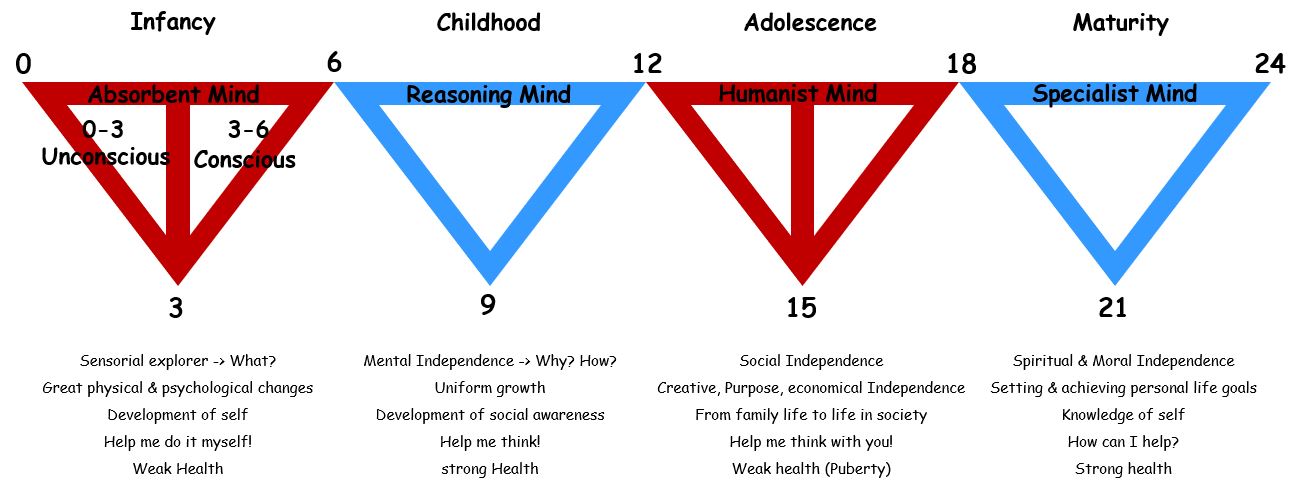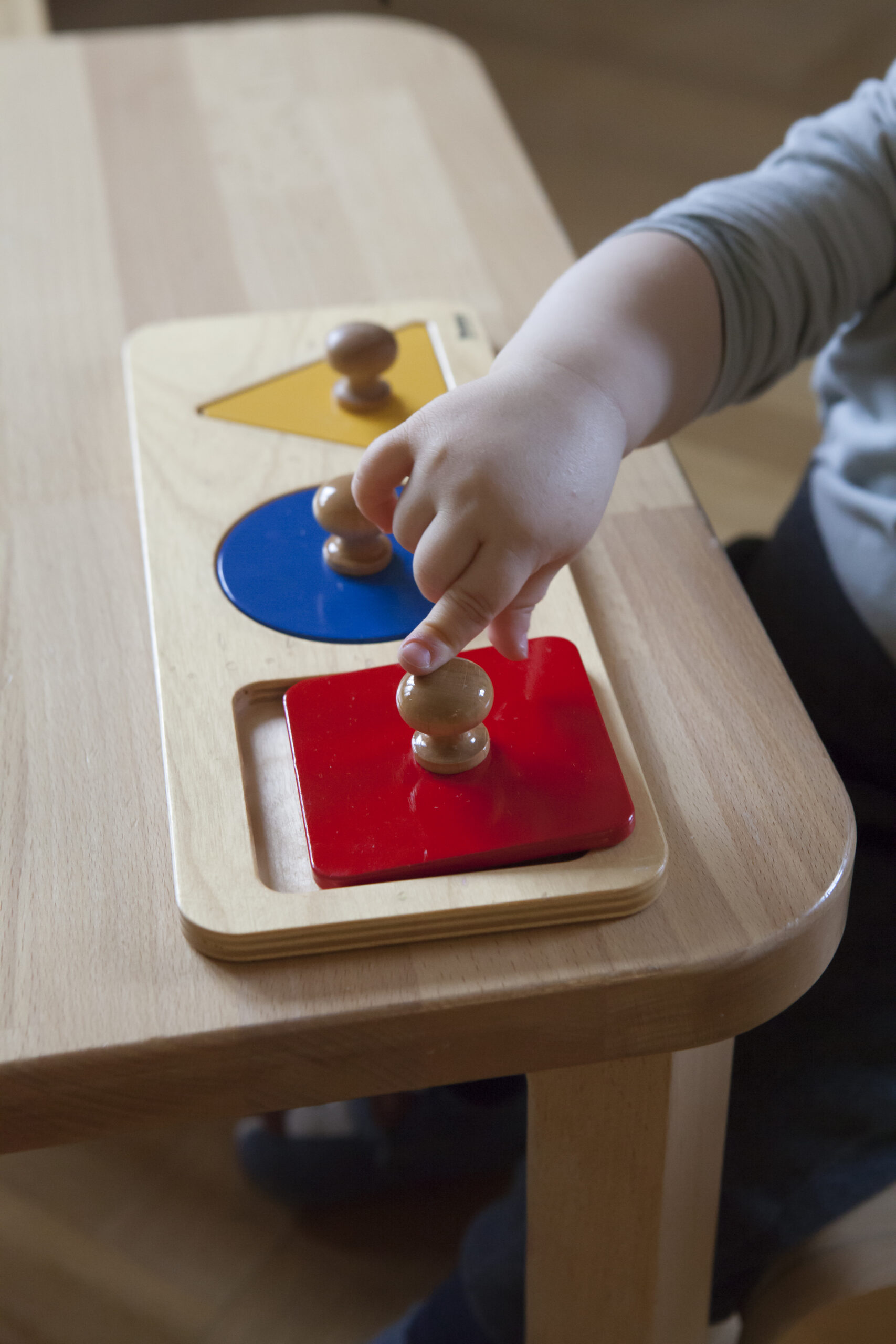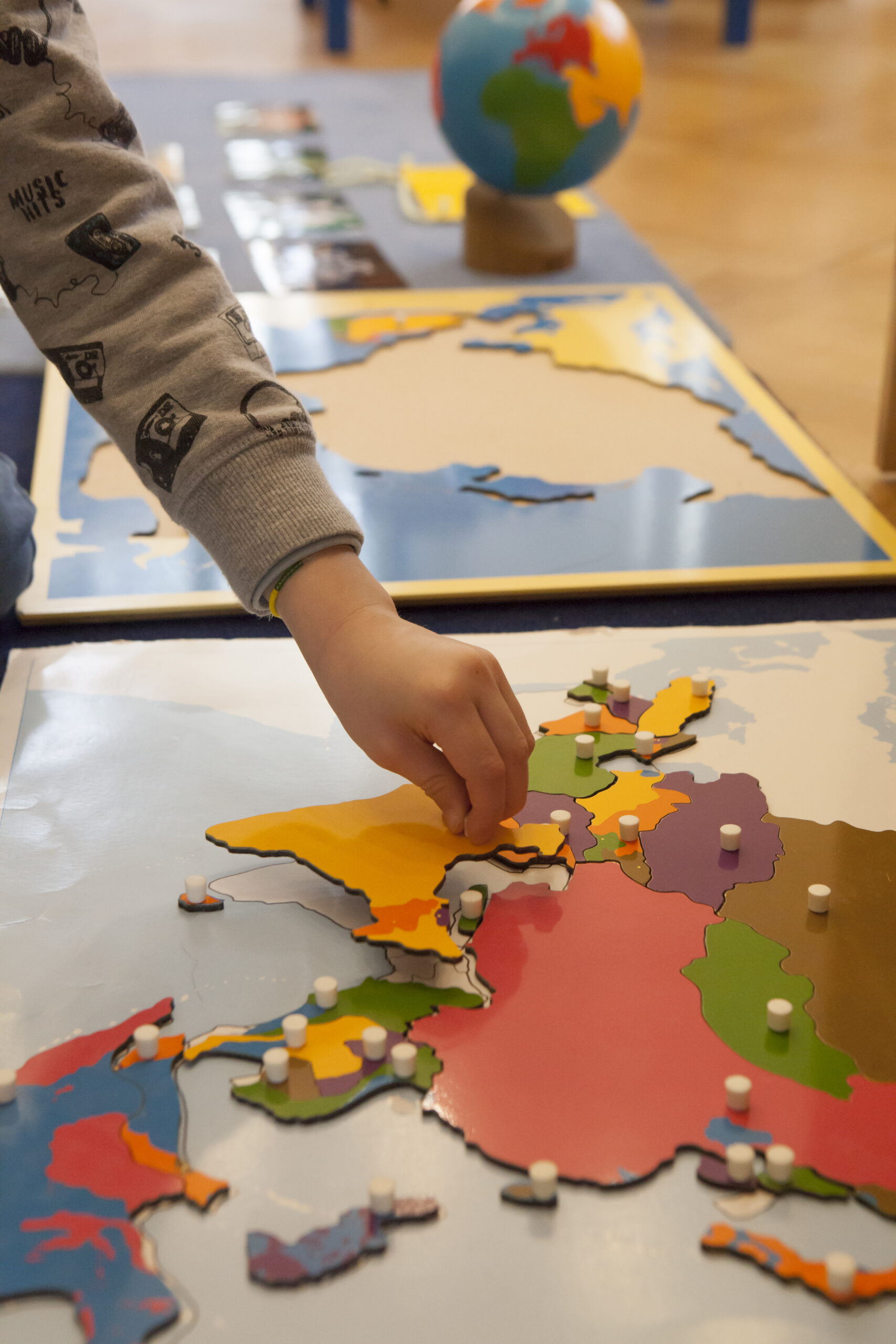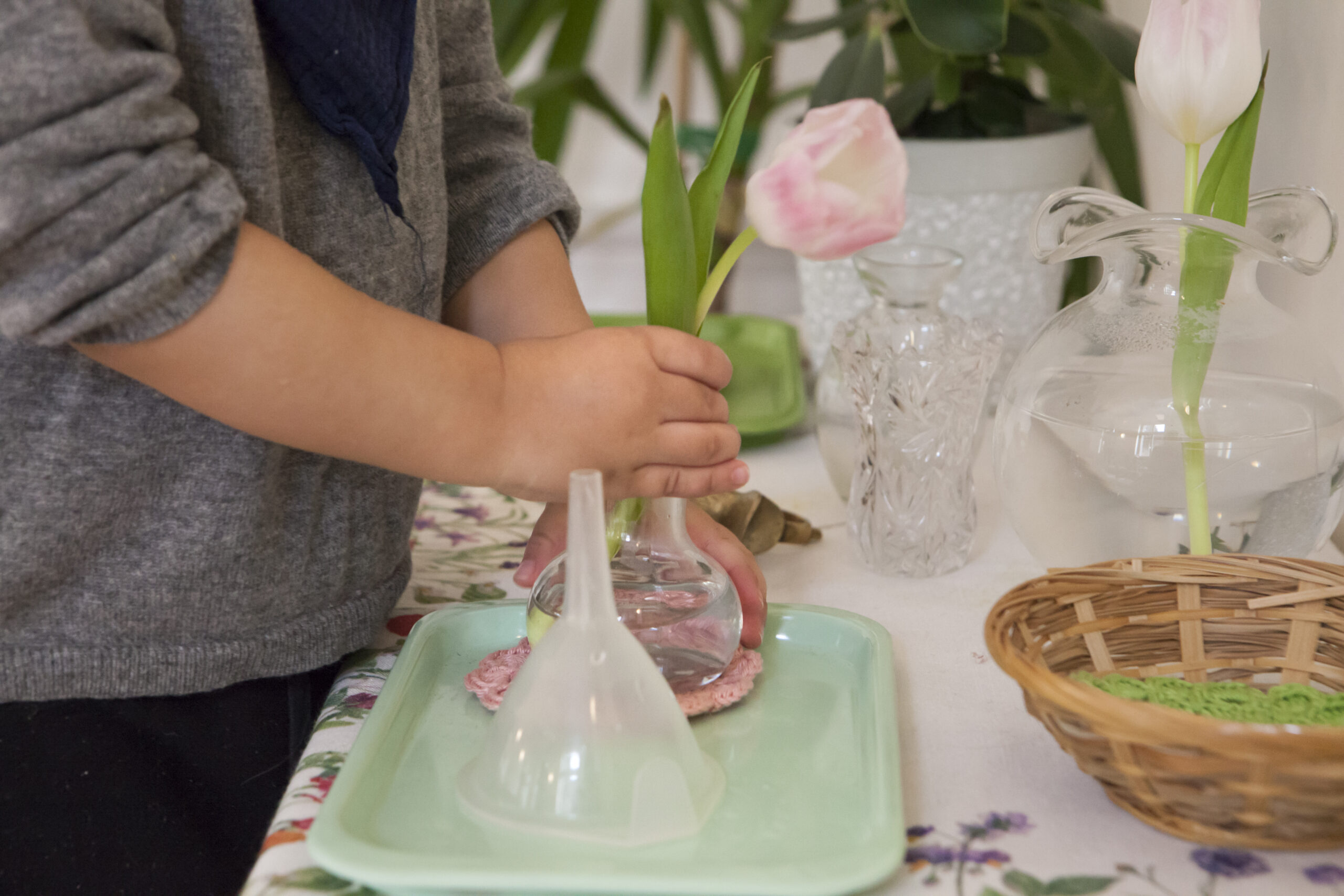Montessori
Infant
Community
The Montessori Method
“Method” Dr Montessori said, which denotes in our minds a system of schools and educational institutions was not the aim of her discoveries.
“Over and over again she insisted that we must think in terms of “help to life” if we were to understand what she was trying to make people see………The first thing to do is to realize that Dr. Montessori was working for life; and only if we understand this, we can begin to understand what her real contribution to mankind was”.
Maria Montessori, The Secret of Childhood
“When the child is born he has the potentialities of the human being ………..All he may become in later life is housed within the framework of the almost inert being that is all that we see.”
Maria Montessori, The Secret of Childhood
Dr. Maria Montessori’s Method is based on the science of life.
Trained as a physician rather than an educator, Dr. Montessori looked at the field of science, biology, embryology, anatomy, and anthropology to explain the surprising phenomena she observed as she carefully prepared an environment that appealed to the “tendencies and characteristics” of the child and removed impediments to the child’s natural development.
Maria Montessori observed that children traverse planes or stages of development in which clearly marked developmental milestone in mental, cognitive, emotional, and physical aspect of the children, universally, take place. She identified four stages of development.
Birth to age six is the most fundamental stage in the development of the human being and its potentials. A period where the core personality, social skills and the personal mind is formed.
As “sensorial explorers” children form and develop their understanding of the world through experimental interaction with the environment.

The Absorbent Mind, Human Tendencies & Sensitive Periods

During this fundamental stage of development Dr. Montessori explained that the child possesses a special kind of mind. She describes it as The ABSORBENT MIND which quickly and effortlessly soaks up the environment just by experiencing it.
In addition to the ABSORBENT MIND the child possesses innate, universal human traits which Maria Montessori identified as HUMAN TENDENCIES such as orientation, communication, manipulation, movement, concentration, and many others. From birth children reach out to move and to do things for themselves, they want to work and be independent. The want to express themselves and communicate with us. They want to manipulate things, repeat their movements, and concentrate on one activity at a time.
Nature has also endowed the infant with SENSITIVE PERIODS which drive the child toward activities in the environment, by means of which the child must acquire certain skills or traits necessary for his self-construction towards his goal of becoming a human.
Speaking of these findings, Montessori stated:
“It begins with a knowledge of his surroundings“. She asked: “How does the child assimilate his environment?“ She explained: “He does it solely in virtue of one of those characteristics that we now know him to have. This is an intense and specialized sensitiveness in consequence of which the things about him awaken so much interest and so much enthusiasm that they become incorporated in his very existence. The child absorbs these impressions not with his mind but with his life itself.”
Maria Montessori, The Absorbent Mind
The Montessori Material
The hallmark of Montessori education is the use of specific material which needs to be manipulated by the hand for optimal learning and memory formation. The hand allows the child through manipulation (prehension) of concrete objects, stimulation of the mind to learn even abstract concepts (for example mathematics) beyond the pure sense of touch and learning of shapes. By exploring and investigating in a personal and independent way, concentration and repetition are possible, fostering further brain development and learning.
Montessori materials are presented to the children in sequence, according to their developmental stage, from the easiest to the most complex, as the educator observes the level of interest and the acquisition of a new skill.
Montessori Materials are scientifically designed to ‘isolate the difficulty’ or the skill which corresponds the developmental stage the child is in.

“He does it with his hands, by experience, first in play and then through work. The hands are the instruments of man’s intelligence.”
Maria Montessori, The Absorbent Mind
The Prepared environment refers to the indoor & outdoor setting of a classroom. Closely associated to the prepared environment, is the human environment, the bonding that exists between the children and the educators, based on love respect and acceptance.
It is meticulously prepared and organized to support the developmental characteristics and interest of a mixed age groups of children.
The prepared environment provides opportunities for language enrichment, independent work, concentration and purposeful “practical life activities”.
The Prepared Environment

As children are naturally attracted to beauty and order Dr. Montessori created an environment and materials that are beautiful, inviting to the child and have an appropriate place (and an appropriate use) in which they belong.
She strongly believed that providing children with a prepared environment in which they can be responsible and make choices, engage in purposeful work, build their intelligence, interact and be polite toward adults and pears, be independent, creative and build self-discipline, fundamentally prepared all children to become graceful, successful, contributing members to their families, the small community, and the entire human society.
The Educator
Montessori referred to the educator as a “director”, a skilled “guide”, and an astute observer. She recognized that their true role was to prepare an environment filled with resources to satisfy the child’s specific learning stage rather than impose ‘teaching’ on that child.
As the child gets older, the director increasingly becomes a ‘partner in learning’ as she guides the children in just the right amount partnering with the child to identify, engage in and pace their own learning independently.

Cosmic education

Dr. Montessori believed in the interconnectedness and interdependence between the child, the community and the cosmos and the resulting responsibility we have towards ourselves, others, and nature.
She observed the need for the child from 0-6years to understand and adapt to their environment, to their culture, to their time and place.
Cosmic education for the child whose work is to construct himself (0-6, the first plane of development) means that the child learns by experiencing nature. In the classroom the child experiences and learns the vastness of our world through the sensorial materials.
Grasping the facts and qualities of our world, learning the language to describe it, labelling, categorizing it, solidifies in the child a confidence in themselves, their society, and the world in its entirety.
This helps us understand why Dr. Maria Montessori so deeply respected the child’s inherent, unspoken request to “teach me to do it myself”.
“These very children reveal to us the most vital need of their development, saying: ‘Help me to do it alone!'”
Maria Montessori, From Childhood to Adolescence
Reach Us
Address
Seestrasse 133
8002 Zürich
